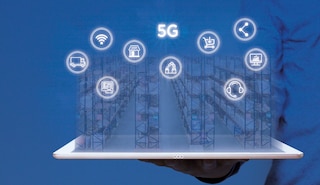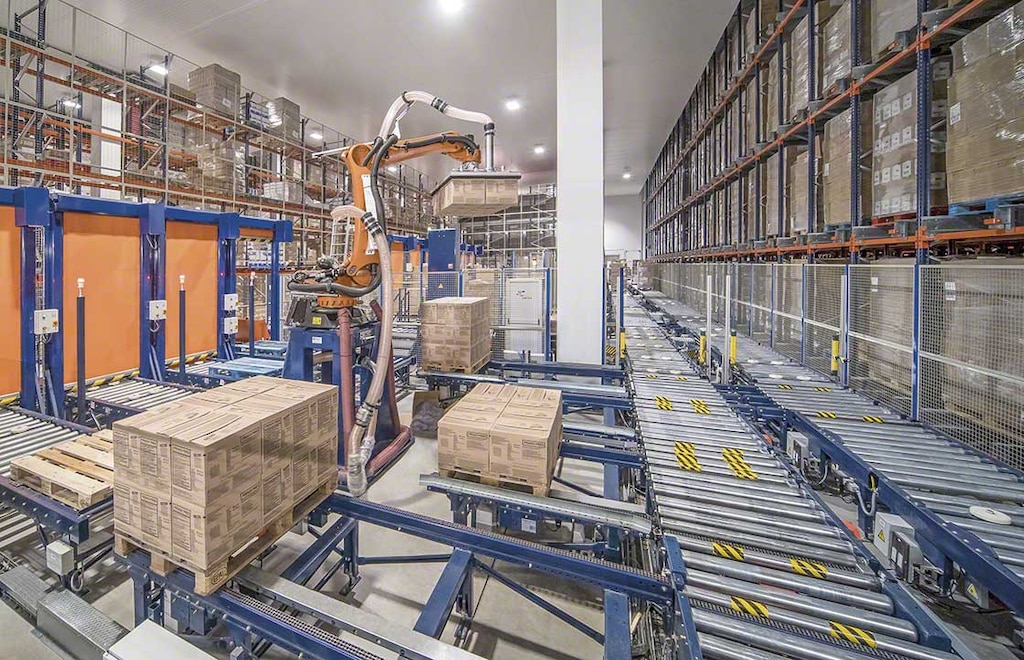
5G and Industry 4.0: revolutionizing industry
5G and Industry 4.0 are set to transform the use of automation, boosting the throughput of warehouses and helping to create safer operations. Globalization changed the way in which we understood business, and now industry will take that a step further with 5G and Industry 4.0, thanks to total interconnection between machines, goods, and people.
In this post, we’ll analyze the concept of 5G as well as the process to adapt to this technology and, above all, its benefits for industry.
What’s 5G? Definition and advantages
5G is the fifth generation for cellular communications, as per the International Telecommunication Union's IMT-2020 standard. It therefore constitutes an evolution of 4G, the technology currently used to transmit data between smartphones.
So, what differences are there between 5G and 4G? Mainly, data transfer speeds. According to the first rollouts from telecom companies such as Verizon, Vodafone (Europe), and EE (UK), 5G devices reach connection speeds 10 to 20 times as fast as those of 4G devices on the market today.
However, just as important as the increased speed is the reduced latency, that is, the time it takes to send a data packet across the network. What’s the purpose of 5G? To cut that down to an interval of 1-2 milliseconds — 90% less compared to 4G.
Thus, in Industry 4.0, 5G will optimize the flow of operations in the supply chain by connecting at maximum speed — and securely — the various industrial devices connected to the network.
How will 5G impact logistics?
Nowadays, when wiring isn’t an option, automated elements in the warehouse make use of WiFi or Bluetooth technology, which usually involves interference and unsecured connections between devices.
5G will help devices to send data over the internet quickly and without error, enhancing privacy and streamlining the exchange of information in the installation.
Additionally, 5G will revolutionize warehouse productivity, since decreased latency in connections between operators and automated elements will result in:
- More cycles/hour: a faster network means mechanized components in the facility will work more efficiently.
- Lower operating costs: the security of 5G will reduce mistakes in warehouse operations, allowing companies to cut unnecessary costs.
In installations employing voice picking or radiofrequency terminals, the reduced data latency will increase the number of picks per hour. This will lead to higher operator productivity and, in turn, to a larger profit for the company.
5G will add value to the management of goods in transit: the integration of all the components in the supply chain will make it possible to make critical decisions with more information, such as the selection of transportation routes in real time.
In fact, transportation will be one of the supply chain elements most affected by the emergence of 5G in Industry 4.0: from self-driving cars to drones, 5G opens up a whole world of possibilities in this area.

5G: welcome to the automation age
5G will definitely consolidate warehouse robotics. A study by consulting firm ABI Research concludes that automation will take off over the next decade, with a forecast of 50,000 automated warehouses by 2025 (there are currently 4,000 worldwide).
In total, it is anticipated that 4 million robots will be operating in the logistics sector in the next ten years. 5G will ensure the instantaneous and secure connection between all the elements that make up the warehouse.
In fact, objects already integrated in logistics processes these days such as robotic picking arms, stacker cranes, and RFID terminals will be made more effective, flexible, and secure by 5G.
Hence, the implementation of 5G technology represents two major improvements for industrial logistics:
- Minimized occupational risks: thanks to higher data transfer speeds and lower latency, the application of 5G will see the consolidation of collaborative robots — cobots — in the warehouse, maximizing operator safety.
- Reduced logistics costs: the advantages of 5G will make it possible to create specialized teams that won’t have to move to the facility to control the machinery. And this will result in cost savings for businesses.
Big data: how do we leverage all of that information?
5G opens up a window of possibilities for communication between all the items that constitute the supply chain: the speed of 5G will strengthen connectivity in the installation, increasing the amount of data and information produced in each step along the supply chain.
The interconnection of all warehouse operations on a single powerful, secure network facilitates the integration of the various parts of the supply chain, guaranteeing full product traceability.
In the end, the arrival of this technology will consolidate the use of automation in facilities by means of reliable networks and low latency. This will boost the throughput of the mechanized elements in the warehouse and reduce errors in operations.
Through the appropriate tools, big data will enable logistics to anticipate market trends, detect errors in processes, introduce solutions in the supply chain, and, of course, to identify new business solutions for the future.
All that information created in the installation poses another challenge for Logistics 4.0: how to analyze the vast amount of data produced from the interconnection of all the components to optimize warehouse operating processes.
